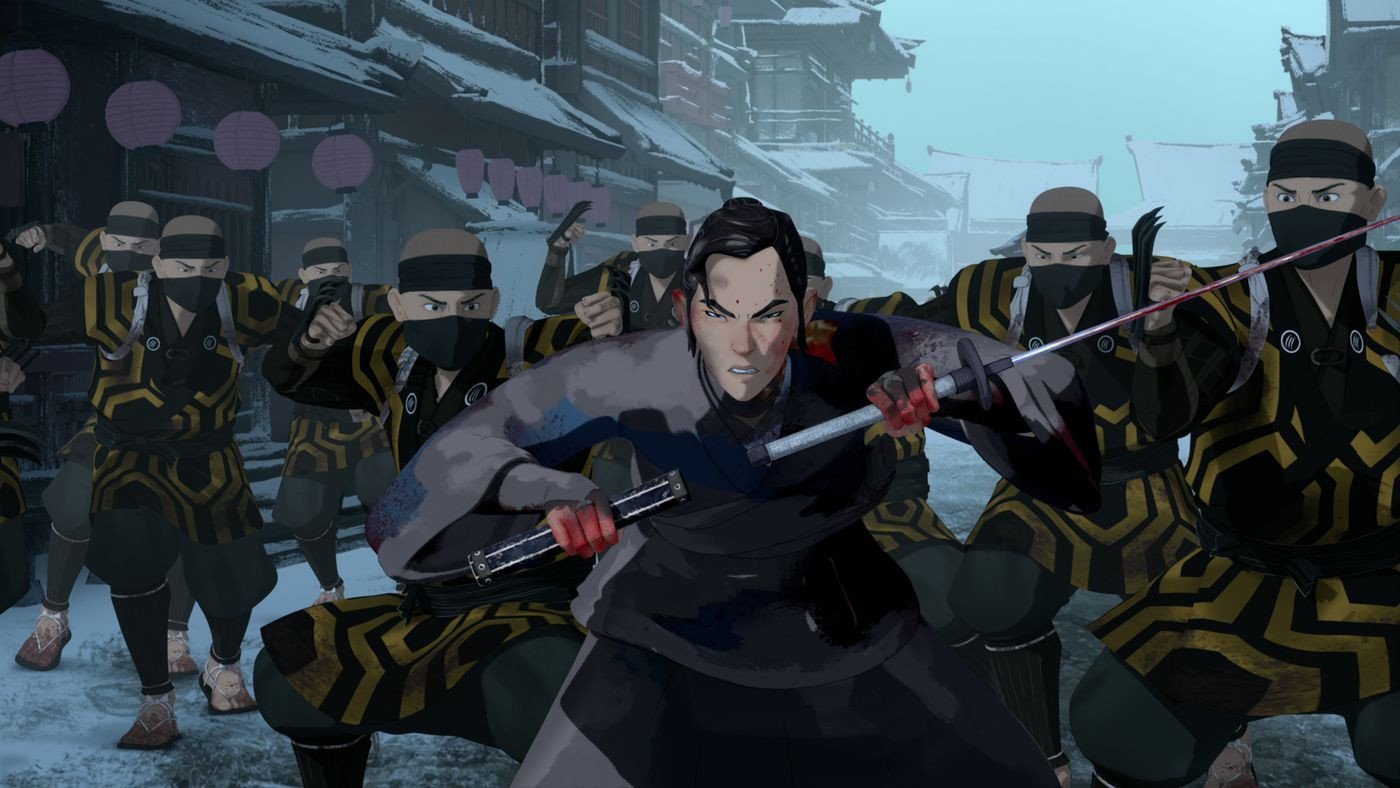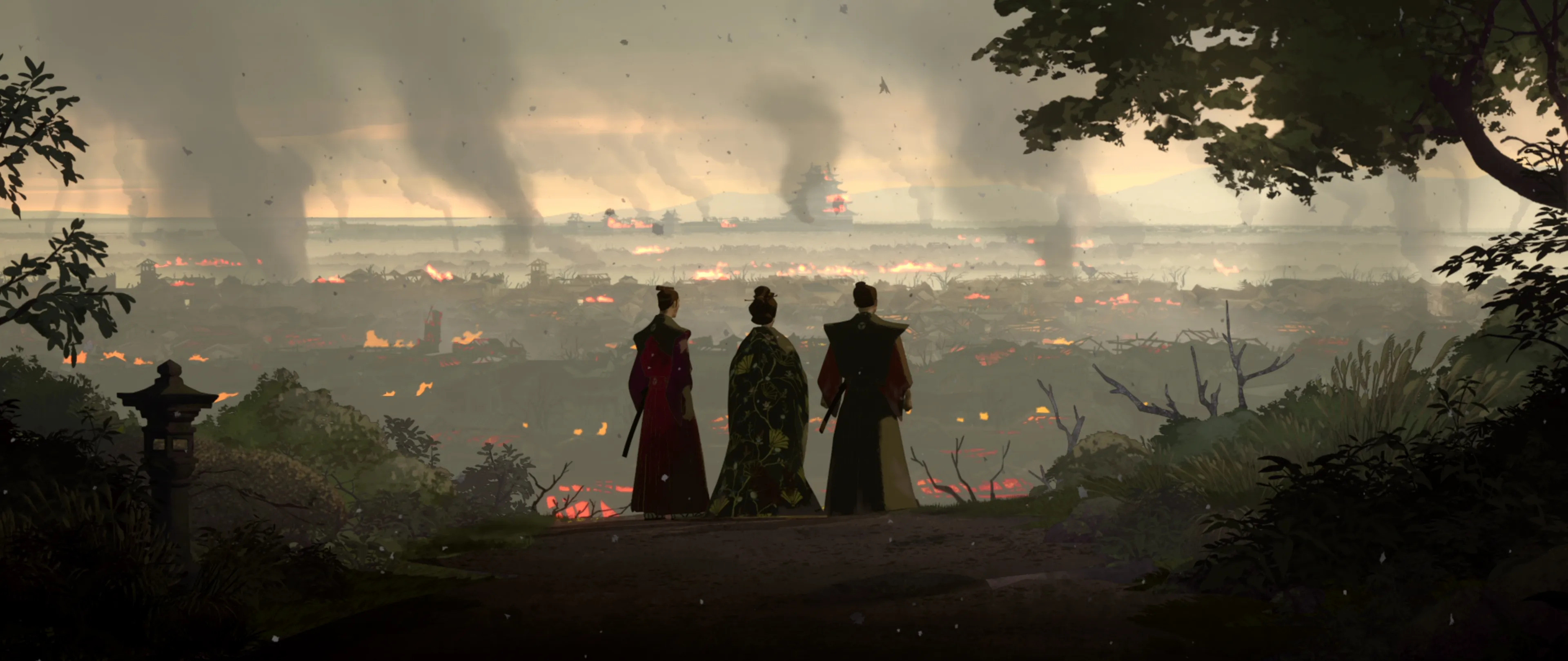“How did this terrible creature come to be? Hate alone was not enough. It took one more ingredient. Love… poisoned by betrayal, to bring so much bloodshed and woe… to create the onryō.”
As I write this, Blue Eye Samurai, a new animated series released by Netflix earlier this month, has graduated from sleeper hit to cult status. Drawing rave reviews, in particular, is the show’s stunning animation and backdrops, and violence that is equal parts style, gore and grit.
But there is more than meets the eye to the story of Netflix’s demon behind blue eyes. The quote above is narrated by the end of the fifth episode – the highpoint of the series in my opinion and that of many others. It is that episode that reveals how deep the cut that spurs the protagonist to single-minded vengeance runs. And it does this while dissecting questions pertaining to gender roles and identity with a delicate touch missing from most media today.
The series' brilliance lies not just in its stunning visuals or gripping action sequences, but in its ability to carve a narrative that transcends the confines of a traditional revenge story.

***SPOILERS AHEAD***
Like other tales from its genre, Blue Eye Samurai begins unassumingly enough. A ronin – a samurai without a master – traversing through a snowy expanse, enters a quaint little inn. An argument with a raucous patron ensues, revealing the ronin’s purpose – revenge.
But protagonist Mizu is no samurai, in self-confessed words. Nor is she a man, as she painstakingly tries to pass as. Like the blue eyes she hides behind tinted spectacles, Mizu hides her femininity under the guise of masculinity and martial prowess. The eyes that lend the series its title become a metaphor for Mizu’s gender experience.
There is more to the eyes themselves, however. Far more than an aesthetic choice, set against the white of Mizu’s skin the same way her blue-clad figure stands out against the snow, they are central to her quest for revenge. Text in the opening panels of the series’ first episode hints as such:
“In 1633, Japan closed its borders to the outside world. Completely.
Citizens would never see a white face, nor any face that was not Japanese.
A child born mixed race would be considered less than human.
Pitiable. Impure. Monstrous.”

We know Mizu is hated for her mixed-race origin from the get go, when a gang of children picks up a stone to throw at her. From flashbacks of her mother, we learn that beyond discrimination, there is a bounty on her head since infancy. To ensure her survival, Mizu’s mother instructs her to hide; first herself and then who she is, even her gender. When a tragedy leads Mizu to presume her mother dead, she is left fending for herself; feeding off scraps ‘like a dog’, as one character from her past puts it; and scuffling against other children who bully her on sight.
Until she finds refuge with a blind swordsmith. A misfit herself, Mizu does collect other misfit allies through her journey, even as she tries to resist it.
"I am on the path of revenge. There's no place on it for love or friendship.”
As an allegory for those who find themselves ostracised by society at large for being ‘different’, it suggests that those on the fringe can find solace and solidarity with each other, should they allow it. But perhaps, that is the hardest ask, when the hate society sends one’s way is internalised.
For the ‘sin’ of being born, Mizu seeks revenge against her father, who she presumes is one of the four European men present in Japan before the emperor closed the country’s borders to foreigners. One of them, we learn, she has killed already. One more, the main antagonist of the first season (hopefully there will be a few more), still operates in Japan as a smuggler plotting the overthrow of the country’s regime.
Given his ruthlessness and aspirations of political engineering, Irishman Abijah Fowler appears to be a straightforward critique of Western colonialism and modern-day imperialism. His grand scheme rests on technological military advantage (à la the United States), as he raises a force armed with smuggled Western firearms to enact his coup. “No one makes a better blade than your people. No one invents better ways to kill people than mine,” he tells one of his Japanese co-conspirators. “No one murders so well as the British. It’s our number one export.”
Still, Fowler is far from one-dimensional as an antagonist. His origin, too, is the fruit of human suffering – he lived through one of the famines inflicted upon the Irish by the English, while his family perished. The cycle of hate and violence, leaves myriad demons in its wake.

As the quote from episode five suggests, it wasn’t just hate that created Mizu’s vengeance. In an exquisite flashback, we see her last chance at life as a woman – and peace. Reunited with her mother, she is reluctantly convinced into marrying a disgraced samurai – another misfit. Little by little, to her own surprise, love seems to blossom. Until Mizu’s truth – her skill as a ‘swordsman’ – sends her husband recoiling.
Popular Western media nowadays is quite divisive.While one segment of the audience clamours for ‘representation’, another groans at ‘wokeness’. The importance of representation notwithstanding, it does appear that a lot of modern shows and films are needlessly ‘sermonising’ despite best intentions. Blue Eye Samurai is masterful in how it avoids that.
Although Mizu cannot really be labelled a trans character – it does not appear that she identifies as a man deep down – the tale of her marriage does appear to be a parable for trans anxieties, especially as they pertain to romantic relationships. Through Mizu and through the character of Princess Akemi, the series also explores the perception that there only a few paths in life for women – along with the defiance of that notion.
Coming back to revenge, as Mizu catches up with Fowler, her hate is portrayed as the trigger for the historical Great Fire of Meireki, which destroyed much of the then Japanese capital of Edo.
“Hate is like a typhoon. It begins as a breeze at sea that is swallowed by darkness. Then deepens. Energizes. And grows ever stronger. Swirling and raging until it is ready to strike!”
A cornered Fowler even taunts Mizu, asking her to reflect on the flames she incites.
In Japanese traditional beliefs and literature, onryō were a specific type of ghost, frequently depicted as women who had been wronged, left traumatised, embittered, and filled with rage due to torment in life. Bound by their eternal grudge, these spirits were thought to wreak havoc in the realm of the living, seeking vengeance for the injustices they endured. Their actions were believed to extend to causing injury and death, even natural disasters, as they pursued redress for the wrongs inflicted upon them during their lives.
Throughout the series, Mizu calls herself and is labelled by others as an onryō. Fitting, then, that her vengeance leaves a city ablaze. Her journey, intertwined with the societal constructs of gender and identity, unveils the harrowing tale of a love poisoned by deceit and betrayal – not just from her husband, but her mother as well. It's in this betrayal that the seed of vengeance takes root, birthing the onryō, a vengeful spirit seeking retribution, her dual nature torn between the yearning for justice and the weight of her own humanity.
